Shore Lark or Horned Lark, the Same Bird?

Many years ago, I was required to persuade my fellow birdwatchers that I had spotted a pair of Shore Larks on a beach just north of the Warren at Spurn Point, Yorkshire, England, to have the sighting recorded in the Bird Observatory’s daily log. What made the task difficult was that the presence of a Shore Lark in this neighborhood was unusual, the encounter demanded that I supply a detailed justification, and that as a teenager, I had never done this before. Nonetheless, I was successful with my presentation.
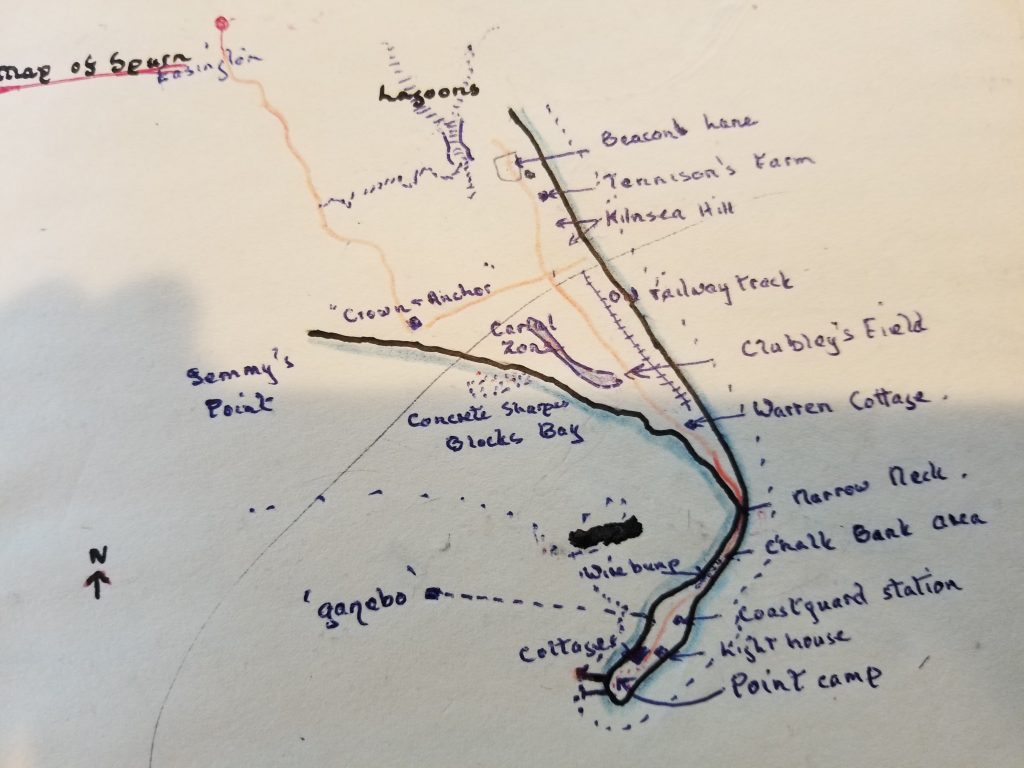 Drawing of Spurn Point April 1961- see my novel She Wore a Yellow Dress for more details
Drawing of Spurn Point April 1961- see my novel She Wore a Yellow Dress for more details
Today there are fewer sightings of Shore Larks in Britain than during the 1960s, and according to the Royal Society for the Protection of Birds, only around 100 Shore Larks arrive to winter each year in the UK. These birds appear along the east coast of England during October to March, traveling south from their breeding grounds. They usually spend summer in Scandinavia and the far north of Eurasia, migrating in search of new sources of food and to avoid the cold weather. Typically they appear along sea-shores and on salt marshes. Those breeding in the mountains of south-east Europe and southern Asia tend to remain there year-round.
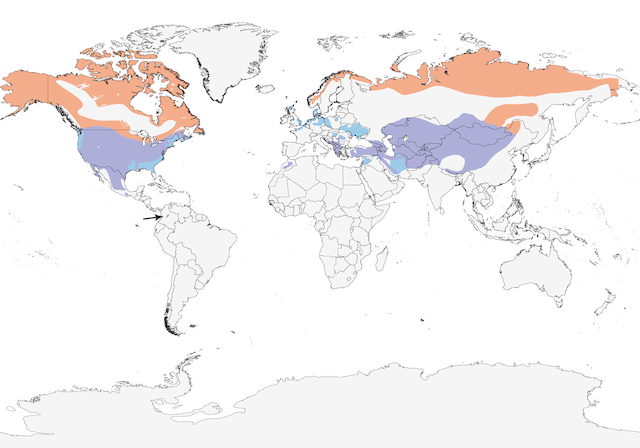 Shore Lark: Global Range Map – orange breeding; purple year-round; blue non-breeding
Shore Lark: Global Range Map – orange breeding; purple year-round; blue non-breeding
Contrast this with my experiences today in California as I fulfill my docent responsibilities to protect the nesting Snowy Plovers on Surf Beach, close to the Vandenberg Space Force Base. During my visits, I have seen close to the above annual number of UK birds that look similar to the ones at Spurn Point, either undulating in flight in small flocks, or erratically walking and running among the dunes foraging for food. The distinction is that in North America these birds are called Horned Larks, and are the only lark that is native to North America. In Europe, there are several other native species such as the Skylark, Crested Lark, and Wood Lark. The Shore Lark probably spread to the New World around 600,000 years ago. Today many are resident in North America year-round, and are joined during winter by Horned Larks from the north and from mountainous areas. Birds belonging to this species return to their birthplace each summer, a characteristic known as philopatry.
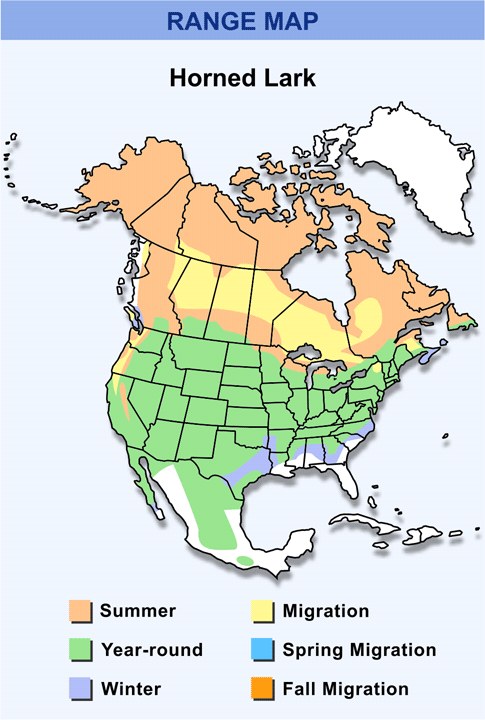 Horned Lark: North America Range Map
Horned Lark: North America Range Map
Horned Larks breed throughout North America, choosing open ground or habitats possessing short vegetation. They construct grass-lined, cup-shaped nests in depressions on the ground, laying a clutch of three to five eggs. Their scientific name translates as “desert lover of the high mountains”.
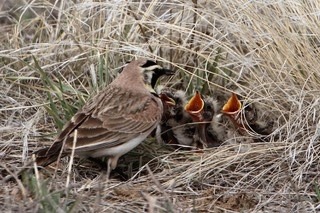 Horned Lark breeding
Horned Lark breeding
There is also a species known as Meadowlark in North America but these birds belong the blackbird, not lark family. Also, efforts in the past to introduce the Eurasian Skylark into North America have usually failed, although a small population survives today on Vancouver Island, and vagrants from Asia are occasionally seen in Alaska.
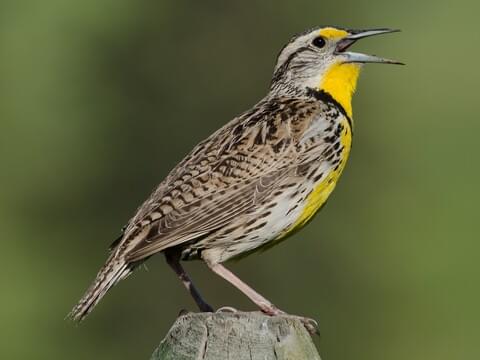 North American Western Meadowlark
North American Western Meadowlark
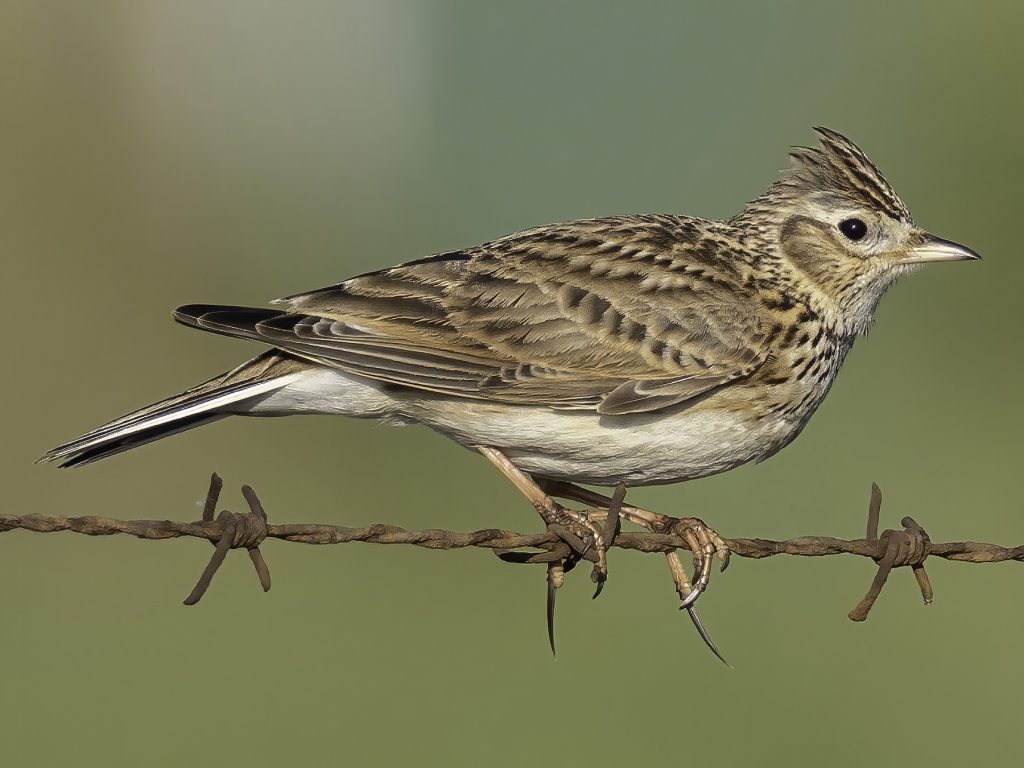 Eurasian Skylark
Eurasian Skylark
This species with two names enjoys one of the largest worldwide ranges of any songbird, and has an estimated global breeding population of 140 million, with 97 million in North America. The species is usually classified as of “Least Concern” from a conservation point-of-view. However, in North America, its numbers have declined by an estimated two thirds since 1970, in part due to pesticides, as well as caused by loss of habitat. In western North America, Horned Larks are one of the species most often killed by wind turbines although, as the chart below illustrates, this cause of death among birds is minor compared with other means of fatality. In the UK, the Shore Lark is on the Amber (Watch) List of birds due to habitat loss caused by changes in agricultural practices and urbanization.
 Wind Turbine Deaths: It Happens!!
Wind Turbine Deaths: It Happens!!
The Shore Lark is easily distinguished from other Old World larks by its pale yellow throat, the yellow on its face, and a black breast-band and cheeks. It is pinkish brown above and whitish below. Males have a small black band across their crown and small black feather tufts, only visible at short range, that are horn-like (two pointed black feathers jutting out backwards on either side of the crown). Males are slightly larger and darker than females and their “horns” are more prominent. The same description applies to New World Horned Larks.
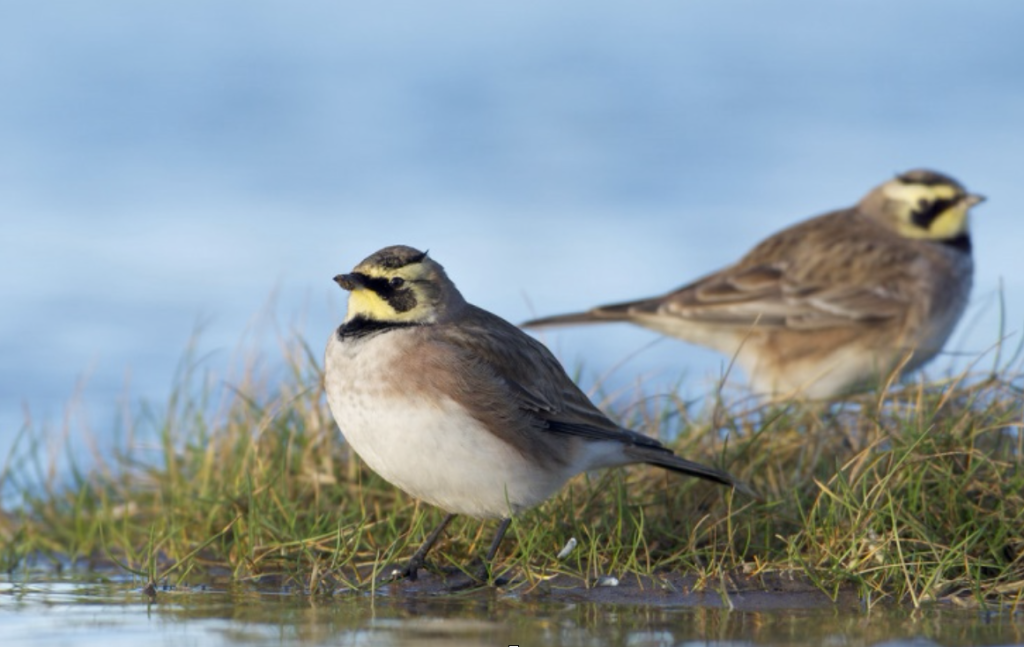 Horned Lark or Shore Lark?
Horned Lark or Shore Lark?
As for the most appropriate name for this species, the North American term seems most suited since it refers to the bird’s obvious feature of “horns”. Also, only in certain parts of Europe does the species migrate to coastal habitats during winter that justifies the name of “Shore Lark”. Personally I am satisfied with either name, and I am delighted that my volunteering at Surf Beach has reconnected me with a species that caused me so much excitement many years ago. However, whether this species continues as a winter visitor to the UK remains uncertain. Global warming will impact mountain and high altitude upland regions as the tree line advances upwards, potentially pushing the habitat of these birds further north.



